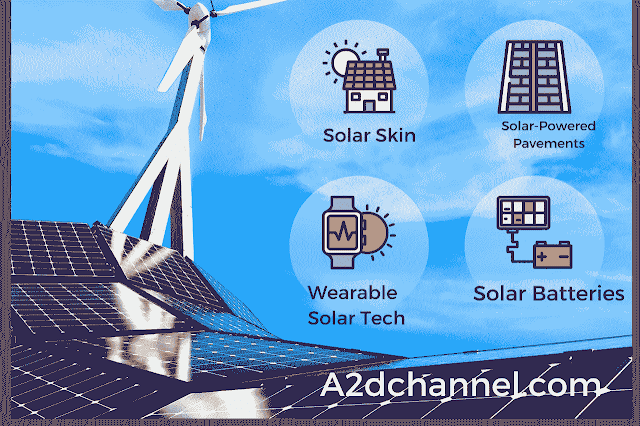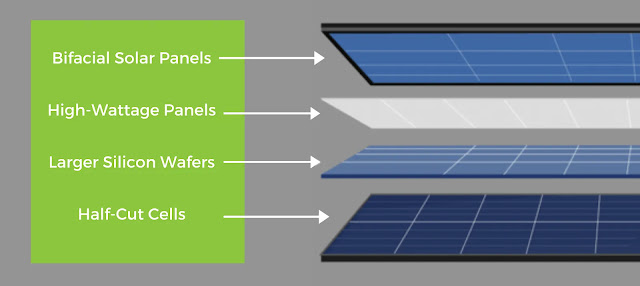What are the advances in renewable energy technologies?
The transition to renewable energy is accelerating, driven by significant technological improvements across various green power sources, including solar PV, wind, tidal, geothermal, and hydroelectricity. Advancements drastically boost sustainable energy systems' efficiency, capacity, and affordability.
Table of Contents
Solar Power Innovations Drastically Improving Efficiency and Affordability
Photovoltaic solar panels have seen their efficiency skyrocket from around 25% in 2000 to nearly 50% recently. This vastly improves the energy output that can be captured from sunlight. In addition:
- Perovskite solar cells are emerging as a cheaper manufacturing alternative to silicon panels, further reducing costs.
As solar itself is getting cheaper, accompanying energy storage technology is also advancing to enable overnight power supply:
- Solar battery capacities are rapidly increasing while costs decline.
- Innovations in solar tracking systems - moving panels to follow the sun - can boost energy production by up to 25%.
Wind Turbines Becoming Bigger, Better and More Efficient
Wind turbines are scaling up in size, with longer blades and taller towers to capture stronger and more consistent winds:
- The larger scale improves capacity factors and profitability.
- Lightweight materials like carbon fibre also enhance blade aerodynamics and longevity.
Beyond the hardware itself, much of the efficiency gains for wind power relate to software and connectivity advancements:
- Detailed weather forecasting guides strategies to optimize output.
- Offshore floating platforms now, wind farms in deeper waters will be enabled with superior wind resources.
Wave and Tidal Energy Coming of Age
Marine renewable sources offer vast untapped potential. Here, key innovations are overcoming past technical and economic viability challenges:
Next-generation turbine designs and durable underwater structures tailored for tidal and wave conditions enable successful large-scale demonstration projects. With superior wind resources, wind farms in deeper waters and planned commercial farms will be possible.
Tidal and wave power also integrate extremely well with solar and wind to balance grid supply:
- Predictable twice-daily tidal cycles provide reliable baseload power production.
Enhanced Geothermal Systems Expanding Viable Areas
Traditional geothermal power has been geographically limited, but techniques like fracking are transforming the landscape:
- Enhanced geothermal systems (EGS) leverage drilling and reservoir engineering to radically expand potential plant locations. Efficiency refinements include:
- Optimized subsurface heat exchanger configurations
- Binary cycle technology reducing subsurface fluid losses
- Several demonstration EGS projects underway in the United States and elsewhere are already adding notable capacity.
Integrating artificial intelligence and machine learning has emerged as another key tool for maximizing efficiency and optimizing production schedules.
Hydropower Upgrades Improving Grid Stability
Upgrading existing facilities supports further growth even in mature markets like Europe and North America:
- More fish-friendly turbine designs reduce environmental impact.
- Pumped storage facilities act as giant water batteries for the grid.
- Smaller modular hydropower options allow distributed low-impact energy harvesting.
- Digital monitoring, controls and simulation are optimizing performance.
Sustainable Bioenergy Utilizing Circular Systems
Bioenergy has faced concerns about competition with food crops and land use change. But new approaches are demonstrating renewable production sustainability:
- Algae offer high-yield feedstocks without needing agricultural land
- Next-gen biofuels feature improved land efficiency and waste biomass sources
- Integrating bioenergy into a circular economy can enable carbon-negative lifecycles
Conclusion - The Renewables Revolution is Underway
The pace of technological innovation across solar, wind, marine, geothermal, and hydroelectric power has been remarkable. As costs continue falling, efficiency and reliability improve, and supportive policies align, the transition to renewable energy systems is achievable and offers immense environmental and economic benefits. Energy storage advancements also remain critical to enable deeper decarbonization. However, the synergies of these complementary technologies paint an optimistic picture for affordable, reliable, and sustainable energy production.

